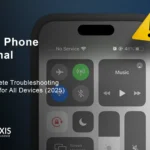⚠️ Cet article est une analyse d'expert avancée destinée à éduquer, alerter et équiper les professionnels de la cybersécurité, les décideurs politiques et les spécialistes de l'éthique technologique. Nous n'approuvons ni ne promouvons l'utilisation de logiciels d'IA nue profonde ou de toute autre technologie dérivée.
La montée en puissance des modèles génératifs armés
Le terme "Deep Nude AI" (IA nue profonde) peut sembler être un clickbait, mais ce n'est pas de la fiction. Il ne s'agit pas de fiction. outilsqui s'appuient sur les réseaux adversaires génératifs (GAN) et l'apprentissage profond, sont désormais capables d'effectuer les tâches suivantes fabriquer des images nues hyperréalistes de personnes réelles sans leur consentement.
Ce qui était à l'origine une application marginale s'est transformé en un programme d'éducation et de formation. catégorie de cybermenace à part entière. En 2025, il ne s'agit plus d'un risque hypothétique, mais d'un risque à long terme. vecteur armé en matière d'hameçonnage, de chantage, de désinformation et de guerre psychologique.
Les conséquences ? Elles sont considérables. A partir de réputation assassinat à AI-La sextorsion par le pouvoirIl s'agit d'une nouvelle frontière de l'exploitation numérique et peu de gens sont préparés.
Pour comprendre pourquoi cela est important, examinons ce qu'est l'IA nue profonde, où elle se répand, comment les cybercriminels l'utilisent et ce qu'il faut faire - de toute urgence.
Qu'est-ce que l'IA nue profonde, d'un point de vue technique ?
IA nue profonde se réfère aux applications de l'intelligence artificielle - souvent à l'aide de GAN (Generative Adversarial Networks), de modèles de diffusion et de grands transformateurs d'image à image - pour produire des images synthétiques de personnes nues, généralement des femmes, à partir de photos d'entrée non explicites.
Ces outils ingèrent :
- Images de profil dans les médias sociaux
- Photos d'identité sur LinkedIn
- Photos de l'annuaire académique
- Photos vidéo d'une personnalité publique
Et retour : des faux photoréalistes entièrement dévêtus, impossibles à distinguer de la réalité sans expertise médico-légale. outils.
⚙️ Technologies courantes alimentant les générateurs nus profonds :
- Diffusion stable avec des modèles NSFW finement ajustés
- Modèles formés par DreamBooth à partir de contenus récupérés
- Modules LoRA ciblant des caractéristiques corporelles spécifiques
- Pipelines GAN open-source accessibles via GitHub et les sites Torrent
Ce qui est choquant, c'est que de nombreux outils sont désormais pas de codeIls sont conviviaux pour les utilisateurs mobiles et proposent des modèles de paiement à l'unité pour un montant aussi bas que $1/image.
Les principales violations éthiques de l'IA nue et profonde
Les outils de nudité profonde violent de nombreux principes des droits de l'homme :
🛑 1. Génération d'images non consensuelles
- Ces systèmes fabriquent des images de nudité sans autorisation, souvent en utilisant le public ou des photos récupérées.
- Les dégâts sont réels, même si l'image est synthétique.
🧠 2. Manipulation psychologique
- Les victimes souffrent d'anxiété, de dépression, de perte de carrière et d'isolement social.
- Le réalisme des résultats crée le doutemême pour les contrefaçons avérées.
⚖️ 3. L'effacement du consentement dans l'identité numérique
- Les "deepfakes" brouillent la frontière entre vérité et fabricationLa présence en ligne d'une personne est donc compromise, ce qui en réduit l'intégrité.
👁️ 4. L'objectivation à l'échelle algorithmique
- Les modèles de nudité profonde intègrent des préjugés dangereux, renforçant souvent la misogynie.
- Les personnes de sexe féminin sont ciblées de manière disproportionnée.
Le paysage des menaces de cybersécurité en 2025
Selon le Keepnet LabsL'IA nue et profonde n'est pas seulement une question sociale, c'est une question de société. urgence en matière de cybersécurité. Deepnude AI Voici pourquoi :
🎯 1. AI Sextorsion-as-a-Service (SaaS)
- Les acteurs de la menace proposent désormais kits de génération de nus profonds préconstruits sur les places de marché du darknet.
- Ils sont accompagnés d'outils de récupération des victimes et de modèles de chantage automatisés.
📧 2. Hameçonnage 2.0
- Les attaquants utilisent des nus synthétiques pour forcer les clicsIl est également possible d'accéder à des données personnelles, d'extraire des informations d'identification ou d'installer des chevaux de Troie d'accès à distance (RAT).
- Les courriels contournent les filtres anti-spam grâce à réalisme contextuel.
🕵️ 3. Campagnes de désinformation soutenues par l'État
- Les acteurs politiques déploient des images de nudité profonde pour délégitimer les militants, les journalistes et les fonctionnaires.
- Des contenus synthétiques sont diffusés sur les médias sociaux pour éroder la crédibilité.
🔐 4. Amplification du vecteur du jour zéro
- Combinées aux outils OSINT, les nudités profondes créent des attaques sur mesure contre des cibles de grande valeur.
- Ils permettent campagnes multisectorielles mêlant doxing, fraude financière et abus psychologique.
📱 5. L'armement viral sur les plateformes sociales
- Les clones de TikTok et les filtres IA d'Instagram rendent la distribution instantanée.
- Des images de nudité profonde sont diffusées avant qu'il soit possible de les retirer, ce qui cause des dommages irréversibles.
Cadres juridiques : Derrière la courbe de la menace
Malgré l'urgence, la législation reste inégale et lente :
| Compétence | Statut juridique | Notes |
|---|---|---|
| 🇺🇸 États-Unis | ❌ Partiel | Les "deepfakes" sont interdits dans certains États (VA, CA), mais il n'y a pas de loi fédérale. |
| 🇬🇧 Royaume-Uni | ✅ Illégal | Couvert par les lois sur les communications malveillantes et le harcèlement |
| 🇪🇺 UE | ✅ Prêt pour les directives | L'ASD et le GDPR se recoupent, mais il faut clarifier l'application de la loi |
| 🌏 Autres | ❌ Incomplet | Beaucoup ne bénéficient pas de la protection de l'image numérique |
⚖️ Les lacunes juridiques sont les suivantes
- Pas de norme sur consentement numérique pour les médias synthétiques
- Une application transfrontalière incohérente
- Poursuite difficile en raison de dénégation plausible des résultats de l'IA
Risques sous-déclarés : Ce que les autres sites ne vous disent pas
La plupart des reportages se concentrent sur la nature choquante des outils de nudité profonde. Voici quelques exemples 5 angles morts:
- Risque d'usurpation d'identité en d'entreprise réseaux
- Blanchiment de contenu via Des images nudifiées par l'IA sur les sites pour adultes
- Vengeance synthétique dans les cas de violence domestique
- Mineurs générés par l'IA le déclenchement de zones grises juridiques
- Absence de filigrane ou de traçabilité dans les modèles à source ouverte
Cas réels : Un modèle d'escalade
France, 2024 :
Plus de 30 étudiantes d'une université parisienne ont découvert que des versions profondément dénudées de leurs photos de l'annuaire circulaient dans des groupes Telegram. L'enquête a montré que les images étaient Généré par l'IA et monétisés via des portefeuilles de crypto-monnaie anonymes.
Inde, 2023 :
Une militante luttant contre la corruption politique a été la cible d'images trafiquées. Bien qu'elle se soit avérée fausse, la campagne de diffamation l'a obligée à se cacher, démontrant les dommages irréversibles que ces outils peuvent infliger.
📍 USA, 2025 :
Les photos professionnelles du PDG d'une startup ont été transformées à l'aide d'une application de nudité profonde. Les maîtres chanteurs exigeaient $50 000 en Monero ou menaçaient d'envoyer des courriels en masse aux investisseurs et au personnel.
Stratégies de défense pour les RSSI et les équipes de sécurité
Cybersécurité les dirigeants doivent agir maintenant. Voici votre pile de défense :
🛡️ 1. Formation à la détection de Deepfake
- Utiliser des classificateurs d'IA pour détecter les artefacts dans les nus synthétiques.
- Entraînement croisé avec des modèles de reconnaissance faciale.
🧱 2. Audits de vulnérabilité des employés
- Identifier le personnel dont les images sont exposées publiquement.
- Effectuez des simulations d'exposition sur les canaux sociaux.
⚠️ 3. Intégration de la politique de contenu
- Mettez à jour votre filtre de contenu d'entreprise pour marquer les biens pornographiques synthétiques.
- Travailler avec les RH pour gérer voies d'escalade du harcèlement interne.
🔍 4. Protocole d'incident juridique
- Construire des flux de travail internes qui impliquent le conseiller juridique dès qu'un contenu "deepfake" est suspecté.
- Stocker les données relatives à la chaîne de contrôle.
🧰 5. Flux de renseignements sur les menaces
- S'abonner aux flux de données sur les abus d'IA.
- Vérifier les mentions de votre marque ou de votre équipe sur le web.
Campagnes d'éducation : Le rôle des organisations responsables
Les organisations ont un devoir d'éducation :
- Universités doit inclure l'éthique numérique dans tous les programmes technologiques.
- Entreprises doivent former leur personnel aux risques liés aux "deepfakes".
- Entreprises de cybersécurité devrait être à la pointe de l'innovation en matière de détection en temps réel.
- Décideurs politiques doivent établir des lois sur les médias synthétiques de manière aussi urgente que les lois sur la cybercriminalité.
- Parents et tuteurs devraient recevoir des kits de sécurité numérique sur l'utilisation abusive des images en ligne.
"Plus nous traiterons l'IA nue profonde comme une menace marginale, plus son utilisation se normalisera. - Cyber Threat Coalition, 2025 Briefing
FAQ - Deep Nude AI
Est-il illégal d'utiliser l'IA nue profonde ?
Dans de nombreuses juridictions, oui, surtout si elle est utilisée de manière non consensuelle. Mais les lois mondiales sont incohérentes.
Comment se défendre contre les attaques de type "deep nude" ?
Commencez par des contrôles de confidentialité, des services de suppression d'images et surveillez les activités anormales sur les médias sociaux.
Les applications de nudité profonde sont-elles toujours disponibles en ligne ?
Oui. Beaucoup refont surface sous de nouveaux noms et domaines.
Les outils de cybersécurité peuvent-ils détecter les contrefaçons de deep nude ai ?
Certains classificateurs avancés le peuvent. Mais la détection en temps réel évolue encore.
L'utilisation de ces outils fait-elle l'objet de poursuites judiciaires ?
Oui, mais rarement. La plupart des cas s'effondrent en raison de l'absence de précédents ou de frontières internationales.





